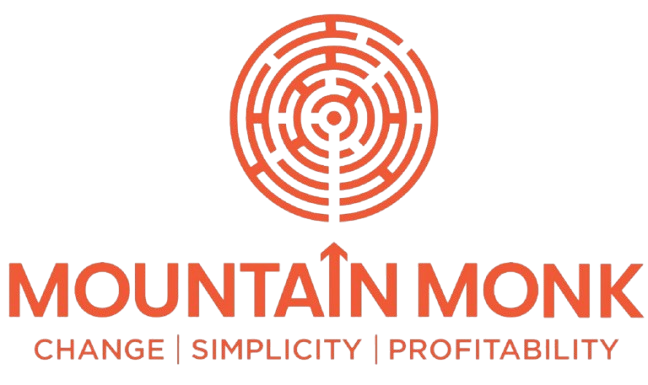India’s renewable energy sector is in the midst of an unprecedented transformation. With an ambitious goal of achieving 500 GW of clean energy capacity by 2030, the country’s focus has shifted from expansion to optimization, making every megawatt count.
For companies in solar, wind, and hybrid projects, success today depends not just on building capacity but on managing operations efficiently, reducing downtime, and maximizing returns on every installation. Yet, many renewable energy players still rely on fragmented data systems, manual tracking, and reactive maintenance models that limit performance visibility and increase costs.
This is where smart operations management strategies and digital tools redefine what efficiency looks like.
At Mountain Monk Consulting (MMC), we’ve worked closely with EPC (Engineering, Procurement, and Construction) firms and asset operators to implement tools that merge field operations, analytics, and performance tracking into one integrated ecosystem—helping them move from reactive firefighting to predictive excellence.
The Challenge: When Growth Outpaces Structure
The renewable energy boom has invited both opportunity and operational chaos. Many firms expanded rapidly, adding sites, assets, and workforce but without a scalable operations model. This led to:
- Inconsistent Data Flow: Different projects using different monitoring systems created data silos.
- Delayed Maintenance Responses: Without real-time alerts, performance issues escalated into losses.
- Inefficient Resource Utilization: Field engineers were deployed reactively, often duplicating efforts.
- Low ROI Visibility: With no centralized performance dashboards, management lacked clarity on asset profitability.
In essence, growth outpaced structure, and profitability suffered.
The Solution: Tools That Power Efficiency
1. Centralized Project Monitoring Platforms
Modern renewable operations rely on digital monitoring platforms that track power generation, equipment performance, and downtime in real time. Tools such as SCADA systems, SolarPulse, or custom-built dashboards integrate on-site sensors and analytics to provide 24/7 visibility.
✅ Outcome: Early detection of inefficiencies, reduced breakdowns, and improved asset uptime.
2. Predictive Maintenance with AI & IoT
AI-driven analytics use IoT data to predict when a turbine, inverter, or solar panel might fail before it does. Predictive maintenance models drastically cut unplanned downtime by enabling proactive interventions.
✅ Outcome: Lower O&M (operations and maintenance) costs and higher asset lifespan.
3. Digital Twin Technology
By creating a virtual replica of renewable sites, digital twins allow operators to simulate performance under different conditions, test new configurations, and optimize load management without physical intervention.
✅ Outcome: Data-backed decision-making and improved performance tuning.
4. Cloud-Based Collaboration Tools
From field technicians to project managers, cloud platforms enable everyone to log issues, track progress, and access updates remotely. This eliminates manual reporting and improves accountability.
✅ Outcome: Seamless coordination and faster issue resolution.
5. Financial & ROI Dashboards
Integrating financial KPIs into operational dashboards ensures visibility on return per MW, cost-per-site, and revenue variance. These tools help leadership track profitability across regions and project types.
✅ Outcome: Strategic control over resource allocation and investment decisions.
The MMC Framework for Operational Excellence
At Mountain Monk Consulting, our renewable operations framework focuses on building scalability with digital intelligence.
- Process Mapping: We begin by identifying operational pain points from installation to maintenance.
- Tool Selection & Integration: Based on business scale, we recommend the right software mix (SCADA, ERP, CRM).
- Data Governance: Standardizing how data is captured, shared, and analyzed.
- Team Training & Adoption: Ensuring that on-ground teams are not just equipped but empowered to use the tools effectively.
- Performance Review: Building automated dashboards that review ROI, downtime, and forecasted yield.
The Impact: From Efficiency to Excellence
Companies that implement structured operation management strategies experience measurable results:
- 25–40% Reduction in Downtime: Through predictive maintenance and real-time monitoring.
- 30% Increase in ROI Visibility: Leadership teams can now make data-driven decisions.
- Enhanced Compliance: Automated logs simplify reporting for regulatory audits and ESG disclosures.
- Higher Workforce Productivity: Technicians spend less time reporting and more time resolving.
- Improved Investor Confidence: Transparent, data-driven performance builds trust and credibility.
Conclusion: Efficiency Is the New Energy
In the renewable energy sector, operational excellence is the true differentiator. With rising competition and thinning margins, the key is to do more with less to run smarter, not harder.
Through digital transformation and robust operation management strategies, renewable businesses can unlock the next level of performance efficiency and profitability.
At Mountain Monk Consulting, we partner with energy companies to design scalable, tech-enabled frameworks that simplify operations and maximize ROI, making sustainability a strategy, not just a statement.





